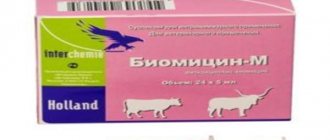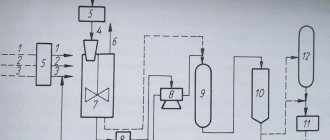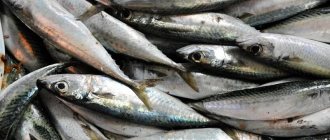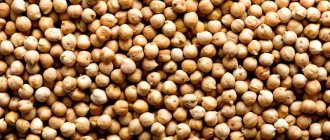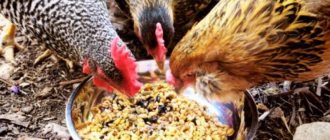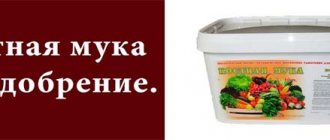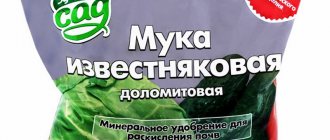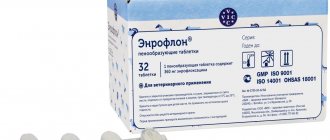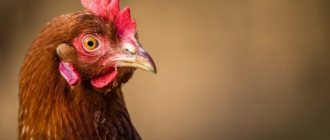To provide chickens and hens with a complete diet, as well as improve their productivity, in addition to regular feed, they should be given special additives. The leaders in the content of useful elements are additives like meat and bone meal and bone meal, which are produced from the carcasses of dead animals that are unsuitable for consumption. What is the benefit of such additives, how to give them to chickens and store them, we will find out further.
What kind of flour is this?
Meat and bone meal is a protein food supplement that is given to farm and domestic birds and animals. Visually, it looks like a homogeneous powder of free-flowing consistency, which consists of lumps with a diameter of about 12.7 mm. In this case, there are three parameters that will help determine high quality flour:
- Color . The additive should have a dark or lighter brown color. The powder should under no circumstances be yellow, as this indicates the use of chicken feathers in the production of the product. Such flour is extremely dangerous for birds - after eating it, they can get sick and lay fewer eggs. In addition, the powder should not be greenish in color, as this indicates the presence of soy in its composition.
- Smell . The mixture has a specific smell, but it should not be musty or putrid. If the flour smells like spoiled meat, then it is unsuitable for feeding chickens.
- Structure . The structure of the powder is crumbly and consists of individual granules up to 12.7 mm in size. There should be no large particles in a high-quality mixture. In addition, the additive particles should not collapse when pressed.
Bone meal is also a valuable feed that is useful for laying hens and broilers. Its characteristics are similar to meat and bone meal, since it is also made from the waste of fallen animals, which are unsuitable for human consumption. The difference is that it contains less protein, since its production primarily uses bones rather than meat waste.
Quality
Feeding hens and chicks should be done only with high-quality bone meal. You shouldn't give your birds cheap supplements. Poor quality powder can cause obesity or illness in chickens.
Meat and bone meal should have a brown or light brown color and a specific smell.
Quality of meat and bone meal
A product of poor quality can be easily distinguished by the following signs:
- greenish tint;
- yellow;
- putrid odor;
- musty smell.
A good product should have a uniform consistency. There should be no large lumps in the mass. This is a sign of a violation of production technology and storage rules.
A putrid odor indicates poor processing of the meat carcass. A musty smell indicates improper storage of the product. A color other than brown may indicate soy impurities. Unscrupulous manufacturers add soy to flour to reduce the cost. Chickens are not getting enough protein, and cases of pecking and cannibalism are increasing in the flock.
It is best to buy the mixture from the same trusted manufacturer.
What is the benefit of the supplement?
Breeders add meat and bone meal and bone meal when feeding laying hens and broilers. It brings its own benefits to everyone.
For laying hens
Current breeds of laying hens are quite productive - they can lay an egg almost every day. However, for this they must receive a large amount of different microelements and animal protein.
Of course, it is not advisable to feed poultry crucian carp or pork, but introducing meat and bone or bone meal into their diet is quite possible. It has the following properties:
- increases egg production and quality (strength) of eggshells;
- takes part in regulating metabolic processes;
- maintains the overall tone and health of the bird as a whole;
- reduces various nervous manifestations and increases stress resistance;
- prevents diseases of the respiratory system and gastrointestinal tract.
If you decide to breed chickens to produce eggs, then in addition to proper feeding of laying hens, first of all, you need to choose a breed of chicken that is capable of producing a lot of eggs. You can read more about the most egg-laying chicken breeds here.
For broilers
Protein supplements should be given to broilers to strengthen the musculoskeletal system and skeletal system. Otherwise, their paws may not be able to support their ever-increasing body weight. If the bird falls on its feet, it may be culled. Of course, this should not be allowed, because the bird must grow and develop until a certain age (usually up to 2 months) in order to be slaughtered for meat.
In addition, regular use of these supplements helps prevent a number of pathological conditions that occur with chronic calcium deficiency. These include:
- rickets in young animals;
- osteoporosis;
- osteomalacia.
Flour promotes the functioning of the bird’s cardiovascular system, as well as the coordinated action of its blood vessels (venous and arterial).
Chemical composition and beneficial properties for chickens
Meat and bone meal is a dry, granular mass of gray or brown color with a specific odor. Made from waste meat and bones.
Do you feed your chickens meat and bone meal?
Yes
100%
No
0%
The product of animal origin contains all the necessary vitamins, amino acids and microelements for chickens:
- Vitamin B1 (thiamine) – is involved in the metabolism of carbohydrates, proteins and fats in the poultry body. Necessary for normal development, weight gain and growth of chickens. Supports the functioning of the cardiac, nervous and digestive systems. Thiamine deficiency leads to decreased egg production in laying hens, growth depression in chickens, and decreased appetite.
- Vitamin B2 (riboflavin) is one of the most important substances for poultry and is involved in many biochemical processes. A lack of riboflavin in the diet leads to slow growth of young animals and decreased immunity. Signs of B2 deficiency in the body are diarrhea in chickens, development of limb weakness, and deterioration of the feathers. In laying hens, egg laying decreases and hatchability of chicks decreases.
- Vitamin B3 (nicotinic acid) – is involved in protein, carbohydrate and mineral metabolism. Protects the gastrointestinal mucosa from damage. A sufficient amount of vitamin promotes rapid growth of young animals and accelerated puberty.
- Vitamin B4 (choline) – acts as a hepatoprotector, promotes the transport and metabolism of fats in the liver. Increases egg productivity of laying hens. Choline deficiency leads to fat accumulation in the liver.
- Vitamin B12 (cobalamin) - chickens need it for normal hematopoiesis, participates in the synthesis of hemoglobin, and plays an important role in protein metabolism. With a lack of substance, young animals develop anemia, development and growth are delayed. Chickens and adult chickens become susceptible to infectious diseases of the gastrointestinal tract. The young fledge poorly and hatchability deteriorates. Chickens with cobalamin deficiency begin to lay eggs poorly.
- Sodium and chlorine - increase the egg production of laying hens and the safety of the young. The substances prevent the development of paresis and gastrointestinal disorders.
- Magnesium is a mineral involved in important biochemical processes. Promotes normal neuromuscular activity, development and strengthening of bones, improves the absorption of vitamin D in the bird’s body. Magnesium has also been shown to improve meat quality. Microelement deficiency leads to a decrease in growth rate and egg production.
- Fluoride – helps strengthen the bone skeleton. Mineral deficiency is found in chickens that lay eggs without shells.
- Potassium is the main extracellular cation responsible for the normal growth of chickens, the condition of the feather cover, and the maintenance of muscle tone in birds. Improves egg productivity. Regulates the metabolic processes of phosphorus, calcium and vitamin D in the body of chickens.
- Zinc – has a positive effect on the growth and development of young animals and egg production of laying hens. Deficiency of the mineral leads to decreased egg production and thinning of egg shells, stunted growth and poor plumage in chickens.
- Copper – participates in the processes of hematopoiesis and skeletal calcification, increases the body’s resistance to infectious diseases. A lack of microelement leads to the development of anemia and stunted growth of young animals.
- Manganese – increases egg production and the strength of eggshells. Microelement deficiency causes high embryonic mortality.
- Iron – prevents the development of anemia in poultry.
- Lysine is an essential amino acid involved in important metabolic processes in the body. Necessary for intensive growth of broiler chickens, promotes the absorption of phosphorus and calcium. Amino acid deficiency leads to poor appetite, decreased immunity, decreased productivity, and slower growth and plumage in birds.
- Methionine and cystine are among the most important amino acids for chickens. They promote the removal of excess fat from the liver, the development of the muscular skeleton, and participate in the formation of feathers and hematopoietic processes. Young animals that do not receive enough methionine and cystine are stunted in growth, susceptible to anemia, exhaustion, and decreased egg production.
How is meat and bone meal made?
In the production of flour, bones and meat of cattle that have died from old age or non-communicable diseases are used. Such meat is unsuitable for human consumption, which is why it is used as an additive to animal feed. Everywhere in the production of flour waste from meat processing production is used. By-products can also be used as ingredients - glands, stomachs, brains, lungs, etc. The exact composition is indicated on the packaging of the finished product.
The powder making process is as follows:
- Boil meat production waste and cool to 25 degrees.
- Grind the finished product thoroughly. At industrial facilities, special units are used for this.
- Sift the resulting powder through a fine sieve to remove the remaining large particles.
- Pass the sifted flour through magnetic separators to remove the slightest metal impurities.
- Treat the flour with special antioxidants to prevent it from spoiling in the future. The fact is that the product contains fat, which will lead to rapid deterioration of the additive if it is ignored by treating it with antioxidants.
- Pack the finished powder and pack it in a container.
During the flour production process, the raw materials used are subjected to heat treatment, so the finished product is safe for chickens and is a valuable source of protein, phosphorus and calcium for them.
Manufacturing steps and principles
Some poultry owners prepare such a supplement on their own, but this is a long and complex process that requires time and proper equipment.
That is why in most cases they buy meat and bone powder made in factories. There the process of creating it is as follows:
- Meat and bones are washed and dried.
- Then the raw materials are boiled or steamed, after which they are cooled to +25 °C.
- The next step is the grinding of the product using special devices.
- The resulting powder is carefully sifted to eliminate large lumps and unground pieces.
- To avoid harmful elements getting into the flour, it is processed in a magnetic separator, the task of which is to sift out metal particles if they get into the mixture.
- Next, antioxidants are added to the product, they ensure its long-term storage.
- The final stage includes packaging and packing of finished products.
Did you know? Chickens don't lay eggs in the dark. They lay eggs either in daylight or wait until the electricity turns on.
Flour composition
The content of the additive is established by the state standard, therefore the GOST number must be indicated on the packaging of a quality product. The composition of meat and bone and bone meal is regulated and determined by GOST 17536-82. We will find out below what each supplement contains.
Meat and bone
The flour should include:
- Proteins (protein). The quality of the protein will determine the class of the finished product, of which there are three. The first class product has the highest protein content. Flours of the second and third classes contain more bones, so they contain less protein.
Protein is necessary for living organisms to build the skeleton, muscles and internal organs. For this reason, a moderate amount of protein supplement must be present in the daily diet of laying hens, roosters and broilers.
- Fats . Their lowest concentration is contained in first class meat and bone powder.
- Cellulose . Regardless of the product class, the cellulose content remains the same.
- Ash . Its lowest concentration is contained in first class powder.
Flour also contains useful biological substances:
- calcium;
- phosphorus;
- sodium
- choline;
- glutamic, adenosine triphosphoric (ATP), nicotinic and bile acids;
- B vitamins;
- thyroxine;
- carnitine;
- riboflavin.
When purchasing flour, you need to carefully read the ingredients on the package. If it contains soy, then it is a low quality product. Such an additive will not only not improve the chickens’ diet, but will also cause a protein deficiency, which can cause the bird to get sick, resort to cannibalism and pecking eggs.
It should be taken into account that the nutritional value of flour is not constant and depends on the concentration of proteins. If the raw materials from which it was produced contained a lot of bones, then the amount of protein in the finished product is reduced. Considering that such a supplement is valued primarily for its high protein content, it is worth choosing a first-class product.
You can clearly see the differences between meat and bone meal of the first, second and third classes in the table:
| Component name | Meat and bone meal | ||
| Class I | Class II | Class III | |
| Component content, % | |||
| Protein | 50 | 42 | 30 |
| Fat | 13 | 18 | 20 |
| Ash | 26 | 28 | 38 |
| Moisture | 9 | 10 | 10 |
| Cellulose | 2 | 2 | 2 |
Thus, flour contains 30-50% proteins, 13-20% fats, 26-38% ash and 9-10% water, as well as up to 20% bone and muscle fragments.
To accurately distinguish between different classes of flour, you should also consider the following:
- First class flour has more protein and less fat and ash;
- second class flour has slightly less protein, but slightly more fat and ash;
- Third class flour contains a small amount of protein, but more fat and ash.
It is best to choose a first class supplement as it has less fat. If you give chickens a powder of a lower grade, their egg production may decrease. In addition, such birds can develop cannibalism.
More details about the composition of meat and bone meal 40-50% can be found below:
| Component name | Content per 1 kg of powder |
| Energy Nutrition | |
| Feed units | 1,04 |
| Dry matter | 900 g |
| Crude fat | 112 g |
| Nitrogen-free extractives (NEF) | 46 g |
| Protein nutrition | |
| Crude protein | 401 g |
| Lysine | 21.7 g |
| Methionine and cystine | 8.8 g |
| Minerals | |
| Calcium | 143 g |
| Phosphorus | 74 g |
| Magnesium | 1.8 g |
| Potassium | 14 g |
| Sulfur | 2.5 g |
| Iron | 50 mg |
| Copper | 1.5 mg |
| Zinc | 85 mg |
| Manganese | 12.3 mg |
| Cobalt | 0.18 mg |
| Iodine | 1.31 mg |
| Vitamins | |
| E | 1 mg |
| B1 | 1.1 mg |
| B2 | 4.2 mg |
| B3 | 3.6 mg |
| B4 | 2000 mg |
| B5 | 46.4 mg |
| B12 | 12.3 mg |
Bone
This product contains less protein compared to a meat and bone supplement, since it is made only from animal bones, but it also helps balance the chicken’s diet, since it is rich in calcium and phosphorus. In addition, this product contains other micronutrients, including iron, magnesium, zinc, iodine, copper and cobalt.
The main properties of the bone supplement are presented in the table:
| Component name | Component content, % |
| Protein | 20 |
| Fat | 10 |
| Ash | 61 |
| Moisture | 9 |
| Cellulose | — |
The bone supplement contains no cellulose at all, but the ash content is the highest compared to meat and bone meal of any class.
Broiler feeding
Proper feeding begins from the first days of a bird’s life. The optimal feeding methods used by farmers are two-stage and three-stage.
Two-stage feeding
The starter mixture begins to be fed to the chicks until the age of 1 month. Then, the finishing compound feed, which is designed to increase muscle mass, is gradually introduced into the diet.
Three-stage feeding
First, they give a pre-start mixture, which strengthens the immune system and causes growth activation. The feeding period is up to 21 days of life. Then a two-stage feeding regimen is used.
Components
The following products are used in feed for broilers:
- corn, wheat;
- meal, alternative - cake;
- bone meal (if unavailable, fish meal);
- fat;
- chalk;
- salt.
The content of ingredients varies depending on age. Overfeeding and underfeeding have equally bad effects on the health of the livestock.
Related publications
Which dog food to choose: what to look for...
Sep 17, 2020
Review of premixes for chickens
May 1, 2020
Mineral supplements
Poultry farmers in private backyards are recommended to use the following types of additives:
| Name of mineral supplement | Quantity |
| Salt | 0.2–0.4%, not more than 0.7%. Eliminates growth delays, shell fragility, muscle spasms. |
| Shell | 1.0–1.2%. Contains magnesium, iodine, calcium, especially useful for laying hens. Makes eggshells harder, they begin to give at the age of 3 days. |
| Feed chalk | 0.5–3%. Supplies calcium (85% of supplement composition) |
| Limestone | 3–4%. Source of calcium, but only 50% is absorbed |
| Eggshell | 10–15 g of crushed shells per head. Contains calcium |
| Phosphates | For 3 parts calcium 1 part phosphorus, during the laying period the amount of calcium is increased to 5 parts |
| Wood ash | 10 g per bird. Supplies calcium, sodium, manganese and other elements to the body. |
| Sapropel, or lake silt | 20 g per individual. Source of protein, calcium, and other nutrients |
All doses are adjusted depending on the basic diet. If meat and bone meal is fed, the dosage for meat breed chickens is reduced by 50%.
Ready-made mineral supplements
Precisely measured amounts of beneficial mineral supplements are contained in finished products. Good mineral supplements include the following ingredients:
- vitamins of group B (B1-B6, B12), A, D3, E, K, H;
- trace elements: iodine, iron, zinc, cobalt, selenium;
- amino acids: methionine, lysine.
Some manufacturers include calcium and phosphorus. However, experienced farmers prefer to add these products separately in the form of chalk and bone meal.
Premixes “Provimi”, “Techkorm”, “Rovimix” and others are produced for industrial production. For subsidiary farms the following are relevant:
- "Rural courtyard";
- "Ryabushka";
- "Agrovit";
- "Economy".
Premixes for age categories and types of poultry are available for sale.
Premixes for laying hens are not intended for feeding to broilers, and vice versa. Before including the premix in the diet, carefully study the norms indicated on the packaging.
Yeast for broilers
Another additive that is used for feeding is yeast. They are microscopic fungi. The chicken body needs special yeast - feed yeast. They help improve the following:
- egg production;
- body weight;
- appetite;
- egg fertility;
- disease resistance.
Feed-grade yeast contains many nutrients:
- vitamins A, D, E, group B;
- Essential fatty acids: linolenic, oleic, arachidonic.
How to give correctly
The proportion of yeast in the chicken diet is 5–10% of the feed weight, or 30 g per 1 kg of individual weight. According to technology, the feed is yeasted.
- To do this, add the powder to the food in the evening and mix well;
- Leave for 8–10 hours, during this period stir 2–3 times to achieve a uniform consistency and distribution of microorganisms;
- In the morning the mixture is fed.
Harm
In addition to its benefits, yeast sometimes causes harm.
- Chickens develop diarrhea;
- Stagnation of fluid with subsequent inflammation of the cloaca;
- Cannibalism;
- Joint diseases due to impaired metabolism.
If such symptoms occur, the dosage is reduced by half or completely canceled.
But you can prevent unwanted reactions from your pet’s body. To do this, they buy only high-quality products. Feeder yeast grown in stillage is highly valued, as it has no side effects. The dosages prescribed by the manufacturer must not be violated, as this is fraught with dangerous diseases in birds.
Rules for using flour and dosage
To diversify the diet of chickens, flour must be added to ready-made feed or homemade mash.
Doses for laying hens
Optimal dosages are determined depending on the type of flour:
- Meat and bone . This supplement should account for up to 6-7% of the total nutrition. Thus, an adult laying hen should receive from 7 to 11 g of powder per day. The optimal amount of such flour for 5 kg of feed is 250 g, and for 10 kg of feed – 500 g. This is the norm that will provide chickens with all the necessary useful elements.
- Bone . Compared to meat and bone meal, this additive is introduced in smaller volumes - it should account for up to 0.6-0.7% of the total nutrition. Thus, the optimal amount of bone meal for 5 kg of feed is 35 g, and for 10 kg of feed – 70 g. The dosage of bone meal should be adjusted depending on the other components of the feed. For example, if chalk or shell rock is added to the feed mixture, then its proportions need to be reduced and, accordingly, vice versa.
Here is an example of a recipe for mixed feed with the addition of meat and bone meal:
- chopped corn – 500 g;
- wheat cereal – 150 g;
- barley groats – 50 g;
- sunflower meal or sugar beet cake – 100 g;
- meat and bone meal – 50 g;
- yeast – 50 g;
- chopped hay or herbal powder – 50 g;
- split peas – 30 g;
- salt – 0.5 tsp;
- vitamin premix containing vitamins A, E and D.
Experienced breeders recommend feeding chickens steamed semi-moist feed, as it is easily digested. And for laying hens, add purchased vitamins to increase egg production.
In the summer, chickens roam around, pecking at worms and insects, getting some protein from live food. In this regard, some breeders reduce the dosage of flour, but this is not necessary, since in the summer, laying hens need more protein and calcium.
Doses for broiler chickens
As mentioned above, meat and bone meal or bone meal is also added to the diet of broilers, but in this case it is worth taking into account special instructions for its use. The fact is that the dosage of the supplement in the menu of young animals needs to be increased gradually in order to promote their healthy growth and weight gain.
The feeding scheme for broiler chickens is as follows:
- From 1 to 5 days – additives are not yet introduced into the chickens’ diet.
- From 6 to 10 days - each chicken is given 0.5-1 g of flour per day.
- From 11 to 20 days - the rate of flour per head increases to 1.5-2 g per day.
- From 21 to 30 days - each broiler receives no more than 2.5-3 g of powder.
- From 31 to 63 days – the flour rate is increased to the maximum and is 4-5 g per head.
Regardless of whether the supplement is given to a laying hen or a broiler, its optimal dosages must be strictly observed, otherwise the bird may develop gout or amyloidosis (a protein metabolism disorder).
Use for cattle
Feeding this product to cattle can also significantly increase productivity. For cows, you should choose flour made from poultry or pork. A product containing cattle bones and muscle tissue may contain the causative agent of such an unpleasant cow disease as spongiform encephalopathy.
Since cows are herbivores, they often simply refuse to eat meat and bone meal. In this case, the product is mixed with bran or concentrates with a gradual increase in dose. Over the course of a few days, the amount of flour consumed by cattle should be increased to 10-100 g per head. MRS are given no more than 20 g per day.
Product storage
Flour is rich in protein components and fats, so it can quickly deteriorate and lose its beneficial properties if the following storage rules are neglected:
- keep in a cool but dry place that is well ventilated or regularly ventilated;
- do not allow the humidity level in the room to increase and the additive not to be exposed to direct sunlight;
- Maintain the room temperature to 28°C (this is the maximum permissible temperature, because if the room is warmer, the fats in the flour will begin to disintegrate and release dangerous toxic substances).
The additive can be stored under acceptable conditions for no longer than 12 months from the date of production. The date of manufacture must be indicated on the packaging.
How to store
Proper maintenance of feed allows you to maintain its quality and beneficial properties for a long time. Bone meal should not absorb excess moisture and cake.
Meat and bone powder is stored in its original packaging. The room must be clean, dry and well ventilated. The room should also be cool.
The average shelf life is about 6 months. The protein gradually decomposes, and ammonia accumulates in the product. Favorable conditions for protein decomposition are created at elevated temperatures. High humidity creates conditions for the development of bacteria and microscopic fungi, so you should not feed chickens with expired formula.
How to make flour with your own hands?
You can prepare a high-quality substitute for a purchased additive at home, but you should remember that this process is accompanied by a strong specific odor, so it is better to do it away from residential premises. You can prepare the flour in the following order:
- Thoroughly clean and wash the bones and meat of cattle.
- Crush the raw materials into small pieces, throw them into a thick-walled container, close with a lid and put on medium heat.
- Cook the raw material until it becomes soft and dark. Typically, but it takes about 3 hours.
- Remove the boiled raw material from the heat and cool, and then grind it in any available way - with a hammer, in a mortar or mill. So, you need to get a loose brown powder.
Homemade flour should be stored in a cool room, first poured into a linen or paper bag. You need to add it to the wet mash in small doses.
An experienced breeder tells how to quickly prepare a meat and bone supplement for chickens with your own hands:
Meat-bone and bone meal are an excellent addition to the diet of young and adult chickens, as they provide birds with all the necessary microelements and vitamins for uniform development. It is important to observe their dosages and adhere to a number of recommendations for their storage.
0
0
Copy link
Meat and bone meal: instructions for use when feeding pigs
Among other things, feeding meat and bone meal stimulates animal weight gain. It is given to pigs in an amount of 5-15% of the total weight of feed. It can be a very good supplement for both sows and growing animals. It is not recommended to use meat and bone meal as a supplement only for very small weaned piglets.
Once flour is added to the feed, it can no longer be heat treated. Otherwise, most of the protein and vitamins will be lost. This rule should be observed when feeding both pigs and other types of farm animals and poultry.
Is it possible to give chickens fish (raw and cooked) and how to feed them with fishmeal?
No matter how strange it may sound, fish, like other animal foods, is very useful for chickens. Its meat belongs to the so-called wet subgroup of such food. Any food of animal origin is a source of protein, vitamins, and minerals.
And fish can be an excellent type of food for chickens, but it can only be given according to certain regulations and rules. Bird food may include non-commercial varieties and waste from processing.
Fish must be boiled before feeding to chickens. You cannot feed them raw food, since the tissues of marine life may contain helminth larvae, and the chickens will become infected with them.
After boiling, the fish is thoroughly chopped and can be served pure or in mash. It is also recommended to remove the bones, as the parsley can choke on them and die. As an option, you can simply cook the product for a long time so that all the solid elements are boiled.
It is not advisable to feed chickens a lot of fish. According to veterinarians, its excess can cause the development of gout in birds. The optimal consumption of the product is no more than 1 kg per 15 birds once a week or 10 g per day per layer. Also, once every 7-14 days you can feed waste from seafood processing.
Salted fish should not be given to poultry. The exception is products that are well soaked in water. You can also prepare it raw for the winter - it is twisted into minced meat, frozen in portions in bags and, as needed, used to prepare mash.
Fishmeal is also prepared from the waste obtained as a result of processing marine inhabitants - this is a dry type of animal food. By the way, it can be fatty with a fat content of up to 20% and non-fat (up to 2-3% fat). The latter is stored longer, so it is more valuable. Fishmeal is considered one of the best types of protein foods, as it contains up to 60% pure protein. It is also rich in amino acids and minerals.
Fishmeal can only be given fresh in an amount of 3-12% of the total weight of the birds’ diet. It should be stored in the refrigerator. Low-fat flour is given at the rate of 1 tsp. on the head, adding it to the feed or mash. When preparing feed, the amount of fish meal for laying hens aged 22-47 weeks is approximately 5% of the food weight, and for birds over 48 weeks - 4% .
Mineral supplements are included in the diet of small chickens from about the 5th day of life, and starting from the 6th day, good-quality feed products of animal origin are also introduced. This can be fish or meat and bone meal in an amount of 5-7% of the total mass of dry food. It is important to ensure that the particle size does not exceed 1-2 mm.
Features of using the additive
A complete diet for animals requires the presence of meat by-products (volume up to 7%). If you supplement the main feed with a meat and bone mixture, you can strengthen the immune system and increase productivity.
A complete diet for animals requires the presence of meat by-products
Sorry, there are no surveys available at this time.
Instructions for using the supplement:
- Chickens, geese, ducks, guinea fowl and turkeys are given offal to improve egg production and prevent the development of pathologies. In this case, the flour is mixed with grass and grain feed, mixed feed (0.8% of the total volume). If you exceed the dosage, it will cause gout and problems with protein metabolism. Deficiency, on the contrary, leads to fragile eggshells, as well as to frequent cases of cannibalism among individuals.
- The introduction of the additive into the diet of pigs allows you to enrich their diet. Animals gain weight faster and the quality of meat products improves. The dosage depends on the age of the animal and its weight. Adult pigs are recommended 5-15% of the total feed, piglets – 2%. It is forbidden to give the supplement to piglets who have not reached 2-3 months of age.
- The introduction of feed flour into the diet of cattle makes it possible to increase the fat content of milk. The additive also has a positive effect on meat quality and fertility. Feed powders based on chicken and meat waste are introduced into the diet. The additive is mixed into the main feed. A gradual increase in dose is indicated (up to 100 g/day).
- For small cattle and rabbits to accelerate growth and increase weight, improve the quality of dairy products and meat.
What should you feed chickens to get an orange yolk: what determines its color?
A special diet is what determines the color of the yolk. That is why, if the chicken regularly receives natural and healthy ingredients, then the color of the egg core will be rich. In general, you can follow a simple rule - give your chickens foods that are brightly colored. These are pumpkin, corn, millet, carrots, red beets. Moreover, the more varied the ingredients, the better.
Interestingly, the color of the corn also affects the result - if you feed pale-colored varieties, then the core of the egg will be dull. But it is worth remembering that corn is very nutritious, and when a chicken eats it, it quickly gains excess weight and begins to lay less eggs.
Pumpkin is an excellent natural source of coloring pigments. By the way, it contains almost the same amount of carotene as carrots, and it can be stored well throughout the winter.
The presence of fresh grass in the diet plays a significant role. It is advisable to give it even in winter. For the winter, you can dry it or buy granulated grass flour, which is soaked in water overnight and given to the chicken in the morning along with corn and wheat.
It has been noted that domestic chickens produce eggs with the brightest cores, usually in spring and early summer. This is due to the fact that the chicken pecks young fresh grass, rich in vitamins.
A good coloring of the yolk can be obtained by adding calendula or nettle to the chickens' diet. Moreover, the last type of plant is the cheapest, simplest and most useful option. In summer, nettles are given fresh, and for winter they are prepared as follows: mowed, dried in the shade, then put in bags and put in a dry place. In winter, it is added to chicken feed and mash for chickens. For babies, the leaves should be rubbed with your fingers.
To get a bright yolk, about 5% grass meal should be added to the feed, provided that feed is used that does not include corn.
A too pale yolk color is an indication that the bird is not eating well. Her diet is high in grains but low in high-quality supplements.
Also, the color of the yolk in an egg depends on other factors. This means a sufficient amount of sunlight, good walking, and excellent living conditions. The breed of bird and its age play an important role. Young layers produce brighter yolks.
Description and production process of the product
A useful product for chickens of all breeds is made from processed bones and meat waste:
- carcasses of animals that died from non-communicable diseases and due to old age;
- non-food trimmings from meat trimming;
- offal products of low nutritional value.
Due to its animal origin, this supplement is a source of microelements in an easily digestible form (lysine predominates over methionine).
The concentration of minerals is quite high: 6.5-11.6% calcium, 3.3-5.9% phosphorus, 3.1-5.7% iron. Receiving such feeding, birds grow more evenly, grow faster and begin to lay eggs earlier.
Stages of production of meat and bone meal:
- Laboratory testing of input raw materials for microbiological safety - absence of pathogenic microorganisms and toxins.
- Preparatory crushing, drying of raw materials and digestion.
- Grinding to mince mass.
- Obtaining a concentrate is dehydration and degreasing of the raw material mass in a centrifuge or separator.
- Final drying and grinding of the concentrate to the condition of a friable powder.
- Introduction of an antioxidant.
- Magnetic cleaning from metal impurities.
- Packaging in wholesale and retail containers.
Flour in the diet of other animals
In small quantities, this product, which is a source of protein, vitamins and minerals, can be given to other types of farm animals and poultry: ducks, geese, rabbits, guinea fowl, turkeys, etc. In this case, the share of flour in the total amount of feed is usually no more than 5-10%.
It would be entirely justified to use a product such as meat and bone meal for dogs (no more than 100 g per day). This allows you to save a little on feeding the animals. In this case, this product acts as a meat substitute.
Previously, owners of four-legged friends used flour for feeding quite often. However, recently many modern, balanced protein, vitamin and mineral supplements designed specifically for these animals have appeared on the market. Therefore, meat and bone meal for dogs is currently used quite rarely. Pet lovers view it more as a budget option for complementary feeding.
